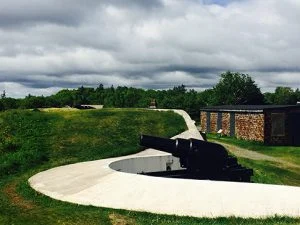
History
Parks Canada places commemorating the First World War
Sites across Canada honouring the war
- 1412 words
- 6 minutes
This article is over 5 years old and may contain outdated information.
History

She was called “Canada’s fightingest ship” because, during her 20 years of service, HMCS Haida destroyed and sank more enemy tonnage than any other warship in the history of Canadian naval combat.
Now, she has been honoured for her proficiency and performance. Late last month, Haida became the very first ceremonial flagship of the Royal Canadian Navy.
The story of what made Haida a legendary warship dates back to the height of the Second World War.
Her service began in 1943, when Haida was tasked with escorting convoys in the dead of night from the port of Scapa Flow, Scotland to Murmansk, Russia in the hopes that the darkness would serve as cover. “The Murmansk convoys were one of the most dangerous convoys of the Second World War,” says Peter Dixon, the official historian of the Hamilton, Ont.-based non-profit organization Friends of HMCS Haida. German vessels and aircraft posed a constant risk to the ships of the Royal Canadian Navy.

In 1944, Haida and three of her sister ships were sent down to Plymouth, England to form the 10th Destroyer Flotilla. “Their whole purpose was to take command of the English Channel” and to clear it of enemy ships, says Dixon. That year, Haida sank 14 enemy vessels and earned battle honours for her service. Haida also played a role on D-Day — the largest marine invasion in history that liberated Western Europe from Nazi rule. During the battle, the destroyer successfully blocked German ships in the Bay of Biscay.
“Haida was the perfection of night fighting in the Second World War — her proficiency was second to none,” says Dixon.
After the war, Haida was converted to a destroyer-escort — a vessel substantially different in size and armament, meant to take on submarines instead of large warships, explains Dixon. In the 1950s, she served with the United Nations in the Korean War, and participated in training missions during the Cold War.
Haida was decommissioned in 1963, and after a farewell tour on the Great Lakes, the ship was headed for the scrap yard — until a group of five men who met on the tour decided to change her fate. Although none had served on Haida, they all believed that the ship’s legacy should be preserved. So they remortgaged their homes and dug into their savings to put up $20,000 to buy it.
The Ontario government acquired the ship in 1970 and made it into a museum, and for more than 30 years, the ship stayed docked at Ontario Place in Toronto. During that time, Haida’s first commander Harry DeWolfe passed away. “The funeral took place on August 30, 2001, which turned out to be the exact same day DeWolfe commissioned Haida in 1943,” says Dixon. “A vice-admiral is entitled to a 15 gun salute and I organized it so that Haida fired a 15 gun salute for her captain. His ship fired a gun salute for him.”
In 2002, ownership of Haida was transferred to Parks Canada. It was then moved to Pier 9 in Hamilton Harbour, where it’s docked to this day. During the summer months, visitors can explore the ship and learn about its history.
Haida played a significant role in Canadian naval combat and is the only Tribal Class destroyer of its kind left in the world — two reasons for which it was named the flagship of the Royal Canadian Navy. Dixon believes the honorary title is well deserved.
“It’s recognizing Canadian naval heritage and excellence. Haida is Canada’s victory.”
Are you passionate about Canadian geography?
You can support Canadian Geographic in 3 ways:

History
Sites across Canada honouring the war

People & Culture
As the climate heats up, so do talks over land ownership in the Arctic. What does Canadian Arctic Sovereignty look like as the ice melts?

Science & Tech
Celebrating Canadian Innovation Week 2023 by spotlighting the people and organizations designing a better future

History
The symbolism of the iconic Canadian fishing and racing schooner Bluenose may be as relevant today as it was 100 years ago when the ship first hit the water